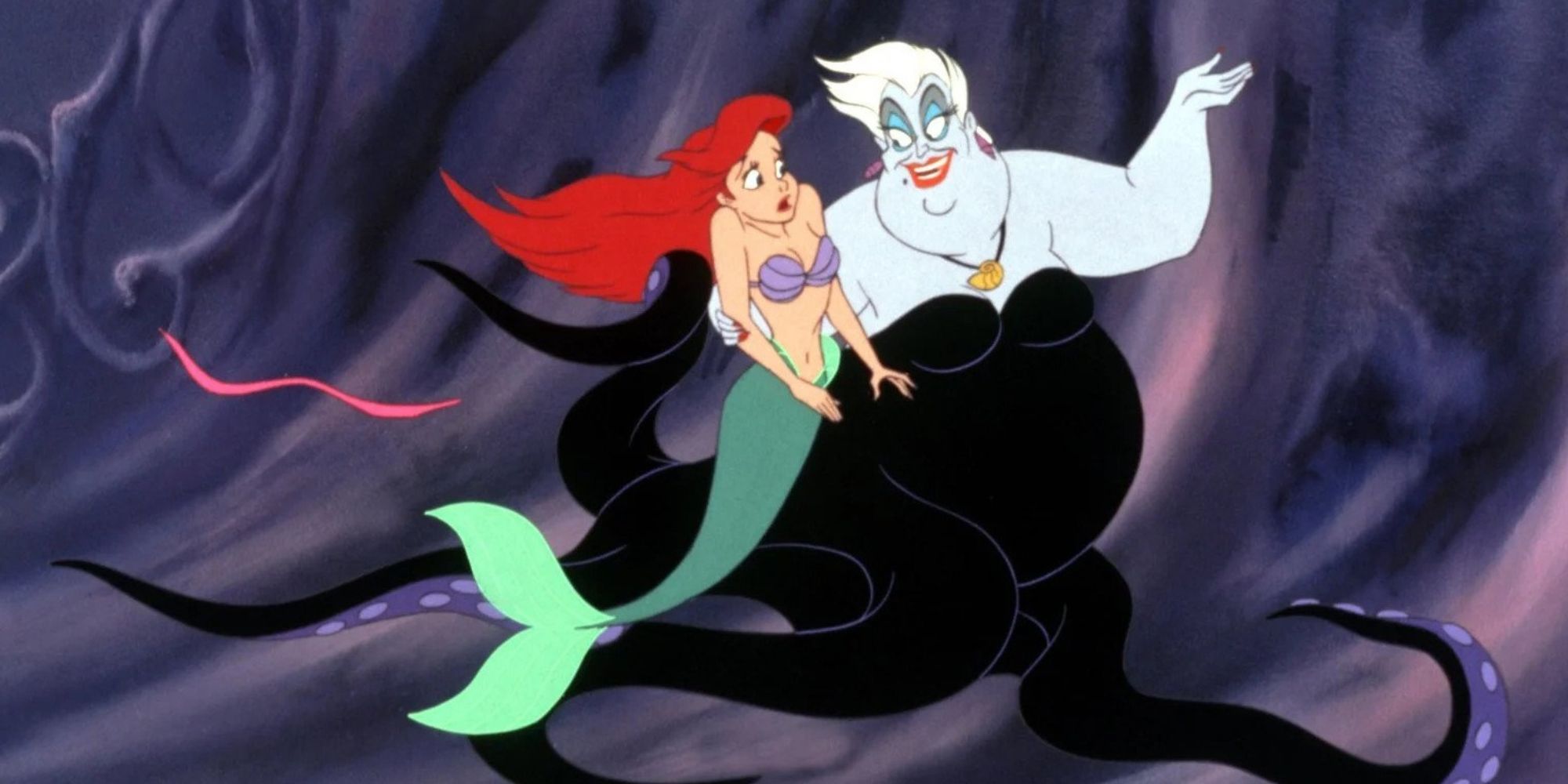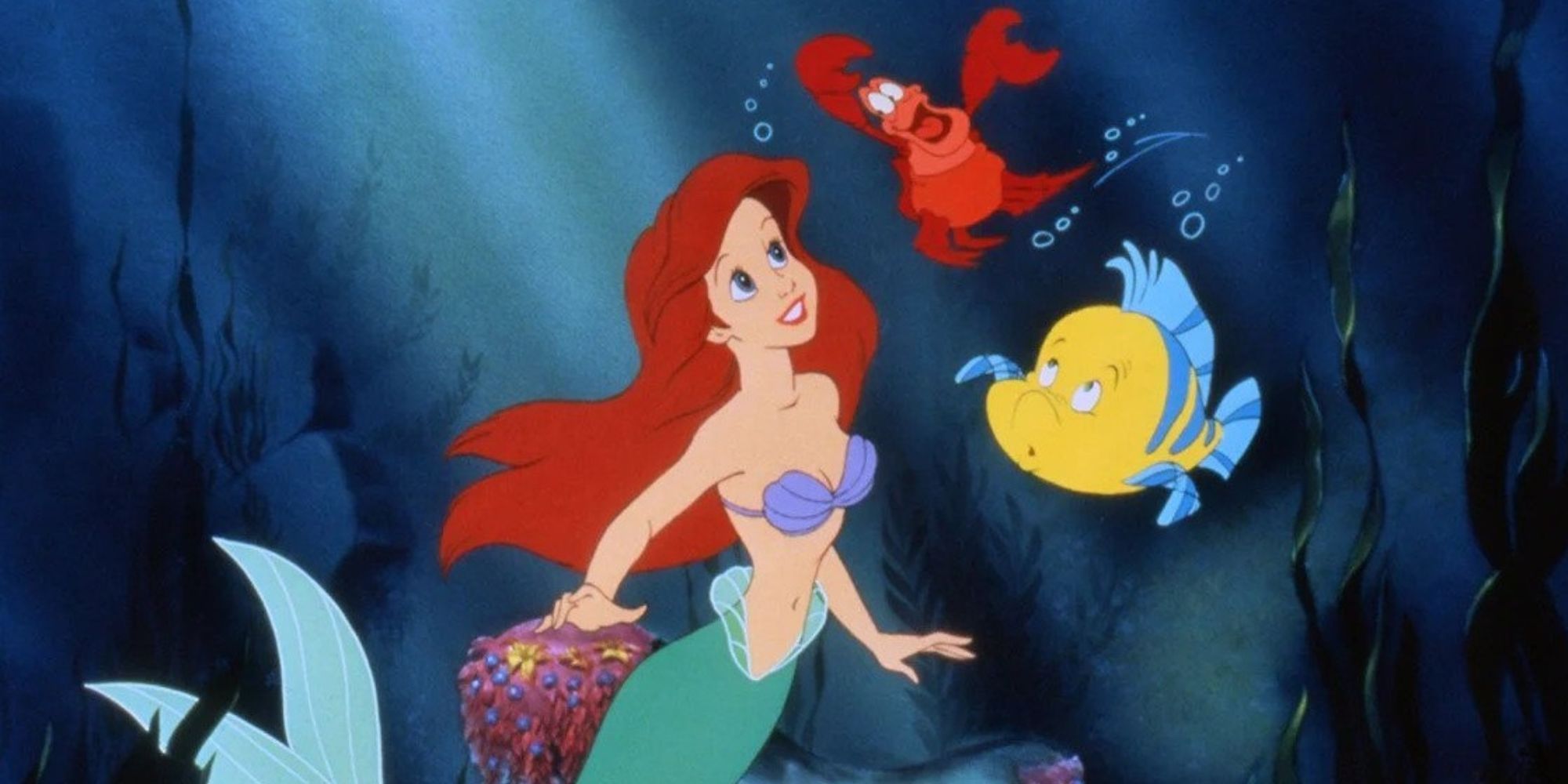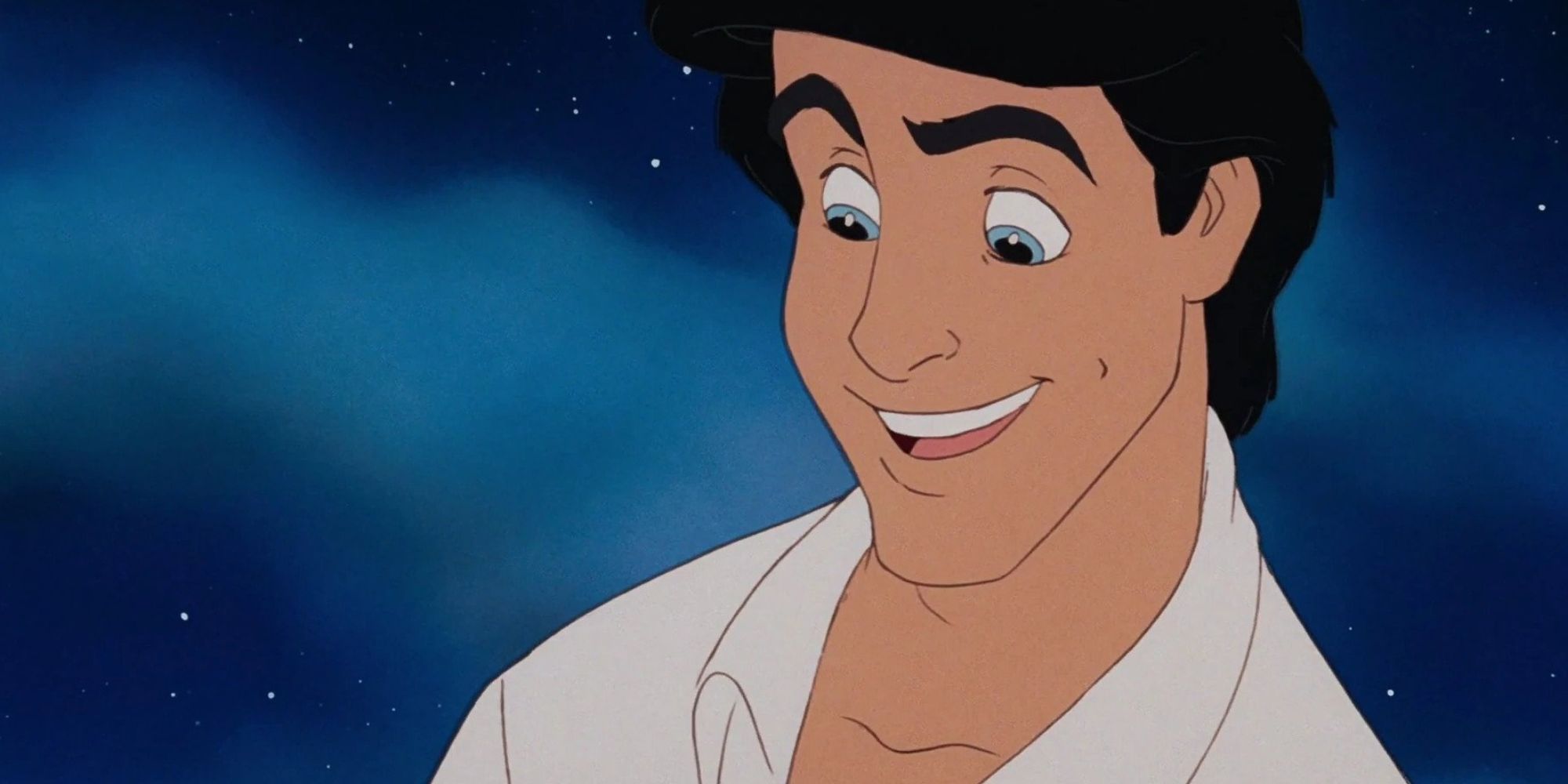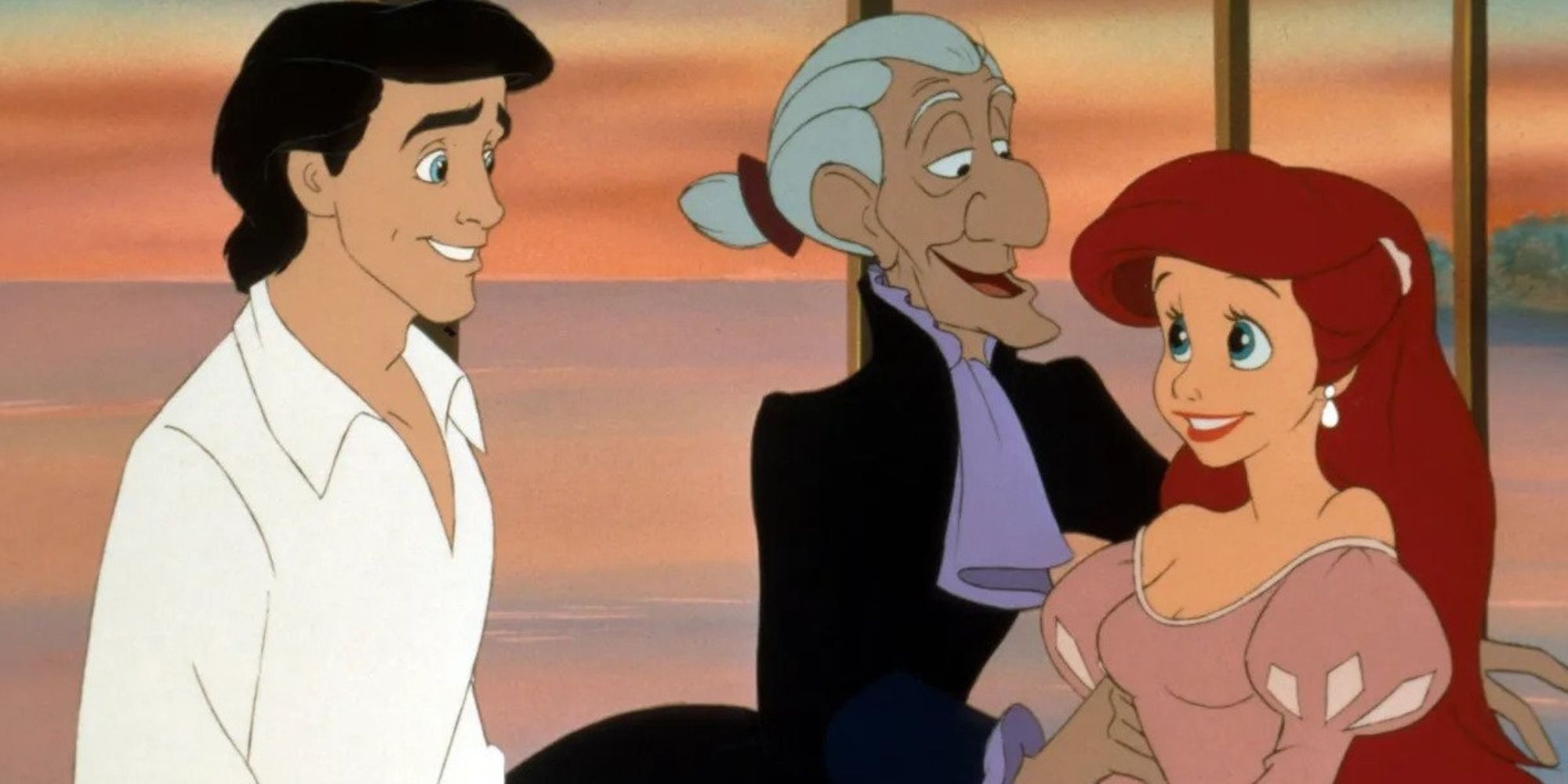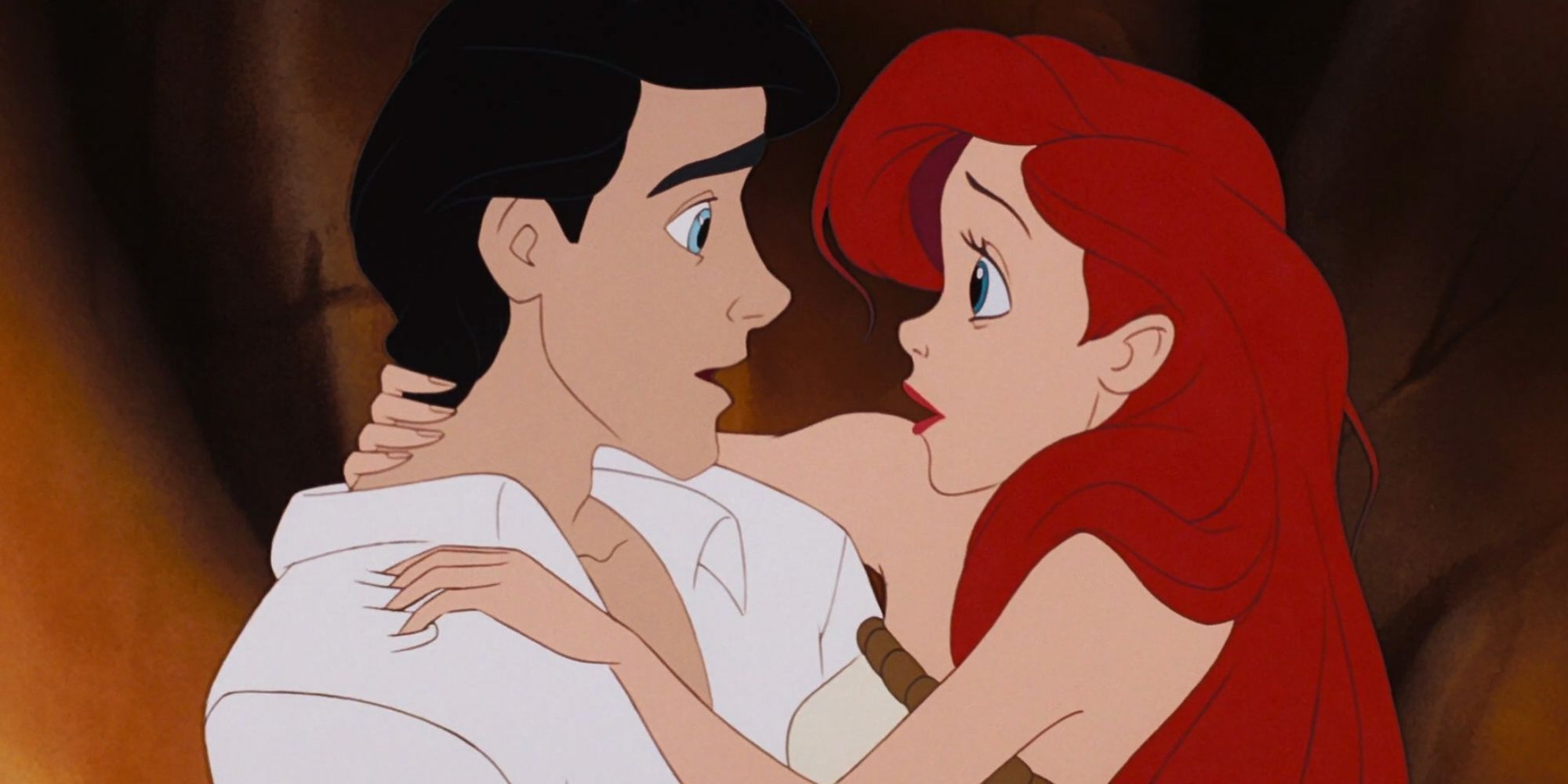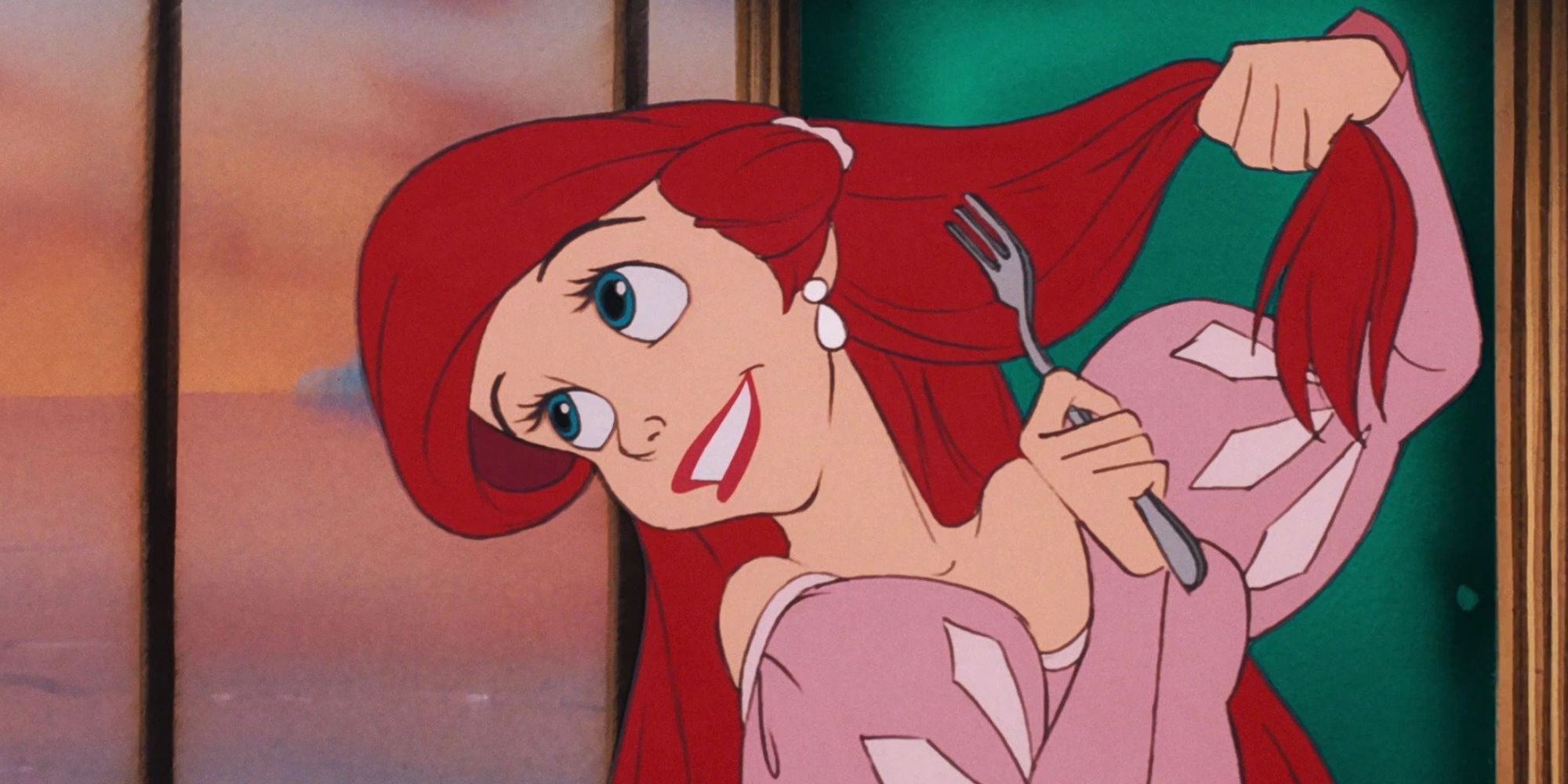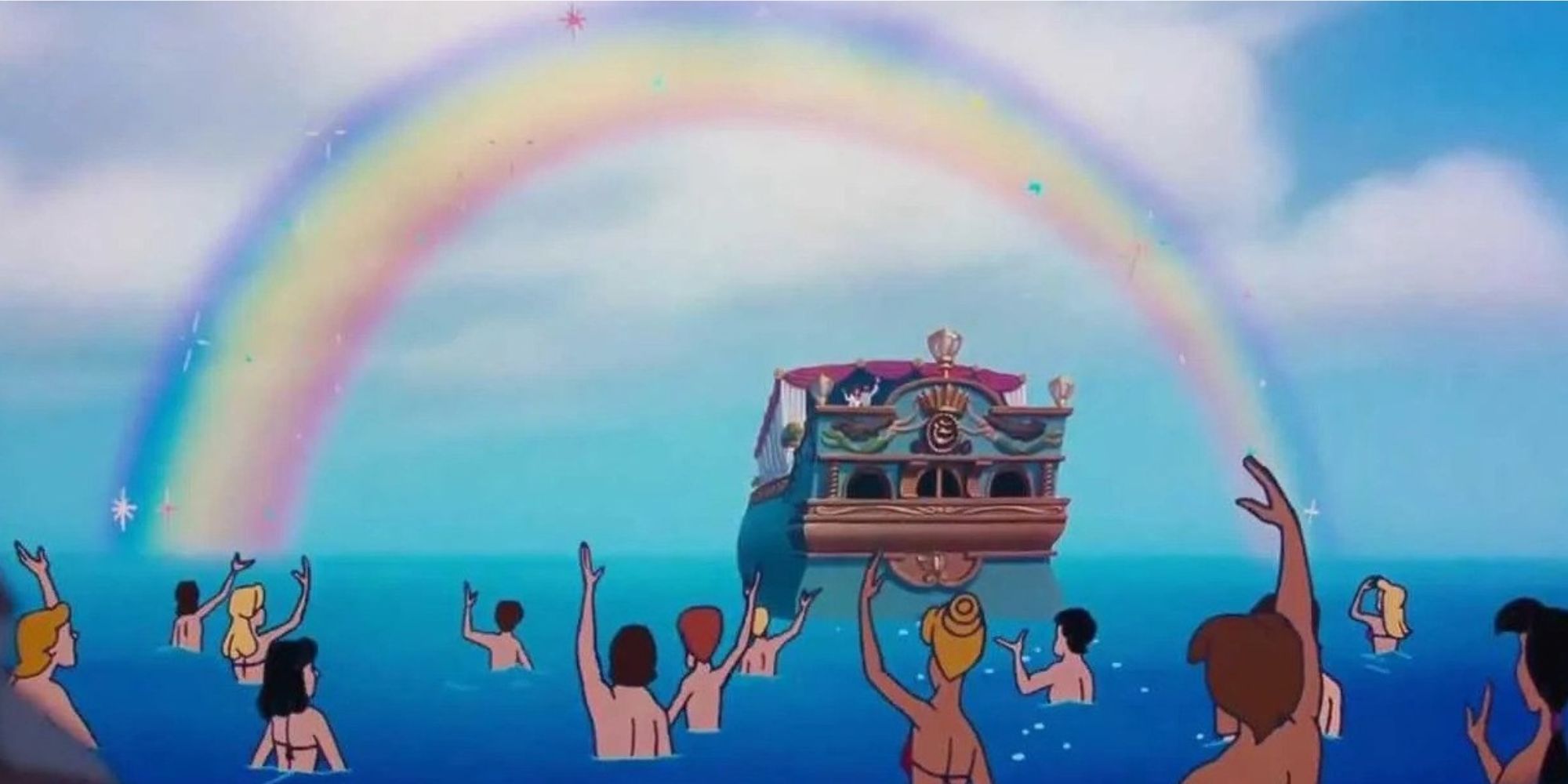Disney’s The Little Mermaid is a well-loved animated classic that graced the screen back in 1989. Starring a stellar voice cast including Jodie Benson, Samuel E. Wright, and Pat Carroll, the film is best known for its depiction of life under the sea, and of course, its catchy songs. However, The Little Mermaid viewers know today was actually an animated adaptation of a much darker version.
‘The Little Mermaid’ by famous fairy tale writer Hans Christian Anderson was published in 1837 as a part of his collection of short stories. In the fable’s original form, an unnamed young mermaid ventures out to exchange her sea life to live on the land and gain a human soul. While the short story and the movie have core similarities, The Little Mermaid varies in many ways — sometimes the source and the film serve as opposites.
The Sea Witch's Role
In the film adaptation, the story’s villain is Ursula the sea witch (Pat Carroll), who plays a significant role in the movie’s progression. Ariel (Jodie Benson) visits Ursula to make a deal - in exchange for legs, Ariel must give up her voice. Ariel is given three days to make Prince Eric (Christopher Daniel Barnes) fall in love with her, or she will transform back into a mermaid and belong to Ursula. However, Ursula’s true intentions to take over the sea allows her to interfere with Ariel’s attempt at love, voiding the deal.
Somehow less evil than her Disney counterpart, Hans Christian Anderson’s sea witch has no name. Exchanging her voice for legs, the sea witch warns the mermaid about the consequences of turning human, including a life of pain, and the possibility of death if the prince marries someone else. In the book, the sea witch does not attempt to interfere with Ariel’s life, and is irrelevant to the rest of the story.
Character's Name Changes
Disney’s The Little Mermaid has made the name Ariel synonymous with the red-haired mermaid in the film, as well as other iconic characters such as Sebastian (Samuel E. Wright) and King Triton (Kenneth Mars). In the book, Ariel is simply known as the ‘little mermaid’, described as the youngest of six daughters.
In fact, none of the characters have names - only referred to by descriptors (king, prince, sea witch, etc.). Ariel’s side-kicks Sebastian, Flounder (Jason Marin) and Scuttle (Buddy Hackett) do not exist in the book, which favors a focus on her family.
To Live Or To Love
Between the two renditions of The Little Mermaid, one of the biggest differences about the little mermaid’s story is her main ambition. In the Disney version, Ariel’s primary goal is to become a human and win the heart of Prince Eric - escaping her life under the sea - where she will do anything for love.
In the story, the little mermaid becomes deeply concerned with the lifespan difference between humans and mermaids when she rescues the prince from drowning and longs to be with him again. When she finds out that mermaids live to 300 years and then turn to sea foam (while humans die and their souls live on in heaven), the little mermaid aims to become human to gain an eternal soul with the one she loves.
The Little Mermaid's Family
The Little Mermaid film showcases the story of a protective father, King Triton, who refuses to let his youngest (of seven) daughters from venturing above the water, in fear of losing her. With no mention of other family members, Ariel’s father is the one who inadvertently makes her go to the surface, and the one who helps save her from Ursula. In ‘The Little Mermaid,’ seeing land is permissible when a mermaid hits her fifteenth birthday, but no one yearns to live there the way the titular character does.
When her grandmother informs her that she will not die with an eternal soul, the little mermaid goes above the water to become human. In attempts to save her from her own demise, the little mermaid’s sisters too, make a deal with the sea witch to pass on a knife, with the goal for the little mermaid to kill the prince in order to break the spell. Unlike the Disney version, her father does not come to her rescue.
Dependence vs. Independence
As the case for many Disney animations - Cinderella, Snow White, Sleeping Beauty, for example - the main character’s life falls into place when they are connected with their love interest. In The Little Mermaid, this troupe is again materialized when Ariel falls in love at first sight with Prince Eric, and correlates a sense of happiness with the idea of them being together. So, she embarks on dangerous spells and living in a world beyond her knowledge - where her happiness is dependent on a relationship. In contrast, the original ‘Little Mermaid’ story instead integrates love into the narrative as a secondary thought, where the little mermaid’s primary ambition is more mature and self-focused.
The little mermaid has more agency in the book, where she decides that she wants to die with an eternal soul; which she can only gain by becoming human. It just so happened that she fell in love with the prince during a period of realization, and through the story, she matures as her selfless ways eventually grant her an eternal soul despite not gaining love.
The Personality Differences
In Disney’s The Little Mermaid, viewers know Ariel to be a red-haired mermaid who wears purple shells as a top, and has a green tail. She’s a sixteen-year-old who dreams of love, and who disobeys her father to reach the surface and transform into a human. She’s strong-willed, rebellious, and naive in her youth. Ariel escapes the control of her father in pursuing Prince Eric. Some viewers would even say her journey to humanhood lacks any moral or personal awakening. ‘The Little Mermaid’s interpretation of the character is vastly different however.
The fairy tale emphasizes her journey into maturity, where her moment of clarity comes as she learns her fate as a mermaid does not end the same way a human does. With patience, she waits until her fifteenth birthday to explore the surface, where she first meets the prince.
Safe and Happy Ending vs. Moral Lesson
In true Disney fashion, The Little Mermaid puts the true love narrative front-and-center. Disney films entertain their audiences with a likable main character who fights adversity and, almost always, gets a happy ending. The original ‘Little Mermaid’ in contrast was a work of fiction that aimed to teach a moral lesson to its readers.
The little mermaid’s life lesson manifests through learning that her happiness is determined through her own actions - love or revenge won’t aid in gaining an immortal soul. The pain of walking, having her tongue cut out, and learning that the Prince wasn’t who she imagined, the little mermaid remained true to herself and accepted her fate, only to be rewarded for her good nature. The story had a focus on the progression of the self, and promises that perseverance pays off.
The Relationship Dynamic
In The Little Mermaid, Ariel falls in love with Prince Eric as she watches him from afar, rushing to his side when a storm throws him overboard. Singing to him, she slips away as he regains consciousness; and she continues to fawn over him as he vows to find the girl who saved him. Their love slowly blossoms when Ariel becomes a human, despite her not being able to communicate with him. The film ends with the characters saving each other from the wrath of Ursula, proving their love to King Triton, who allows them to be together.
‘The Little Mermaid’ wasn’t as much of a love story as its adapted version. The little mermaid is infatuated with a marble statue of a human, and on her fifteenth birthday, she first encounters the prince when she rescues him from drowning. However, another woman passing by is there when he wakes, and the prince finds himself in love with her. The little mermaid in the meantime makes a deal with the sea witch to become human. Once human, despite her attempts at winning the prince over, he chooses to marry the woman who he believes saved him from the storm.
The Consequences Of Being Human
For Ariel to become human in The Little Mermaid, she makes a deal with Ursula to become human for three days in a bid to win over Prince Eric, taking away her voice in the deal. The conditions of the deal were simple: if the three days were up without Ariel getting her ‘true love’s first kiss’, then she will become a mermaid once more, and live a life of servitude under Ursula.
In ‘The Little Mermaid’, the consequences of being human were a lot more dire. Like in Disney’s version, the little mermaid exchanges her voice for legs. However, once she is human, she will never be able to become a mermaid again; feeling a stabbing pain with every step. If the mermaid fails to marry the Prince, and he marries someone else, then she shall die without an eternal soul and turn into sea foam.
The Endings Are Worlds Apart
Ariel’s story ends with a battle in the seas against Ursula, who captures her when the spell against Prince Eric is broken. King Triton revokes his status as ruler of Atlantica to take Ariel’s place as Ursula’s servant, but Eric kills the sea witch before she can take reign. Impressed by Ariel’s love for Eric, King Triton permanently turns Ariel into a human, and she and Eric marry. ‘The Little Mermaid’ has a drastically different ending. With the Prince seeing the mermaid as more of an amusing companion than a lover, he is set to marry another woman. With the deal with the sea witch stipulating the little mermaid’s demise, she waits for her death at sunrise. Her sisters come to the surface just before the sun rises, holding a knife that they exchanged for their hair.
The new deal with the sea witch allows the little mermaid to live, as long as she kills the Prince. Unable to kill him after realizing that he found true love, she throws herself into the ocean and turns to sea foam. However, because of her selfless nature, she is granted a different chance to earn her eternal soul from the daughters of the air: as long as she performs good deeds in her 300-year lifespan as a mermaid, she will rise to heaven upon her death.


